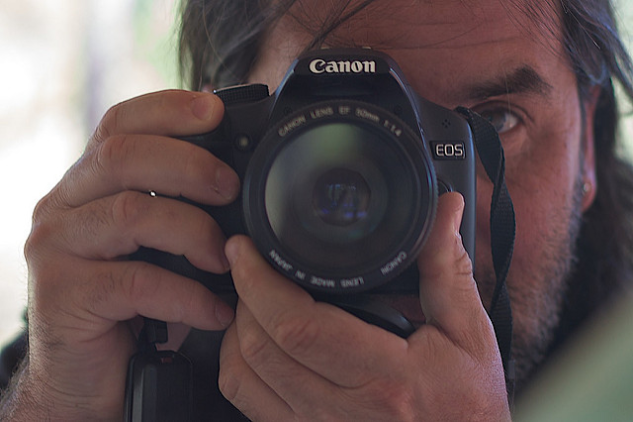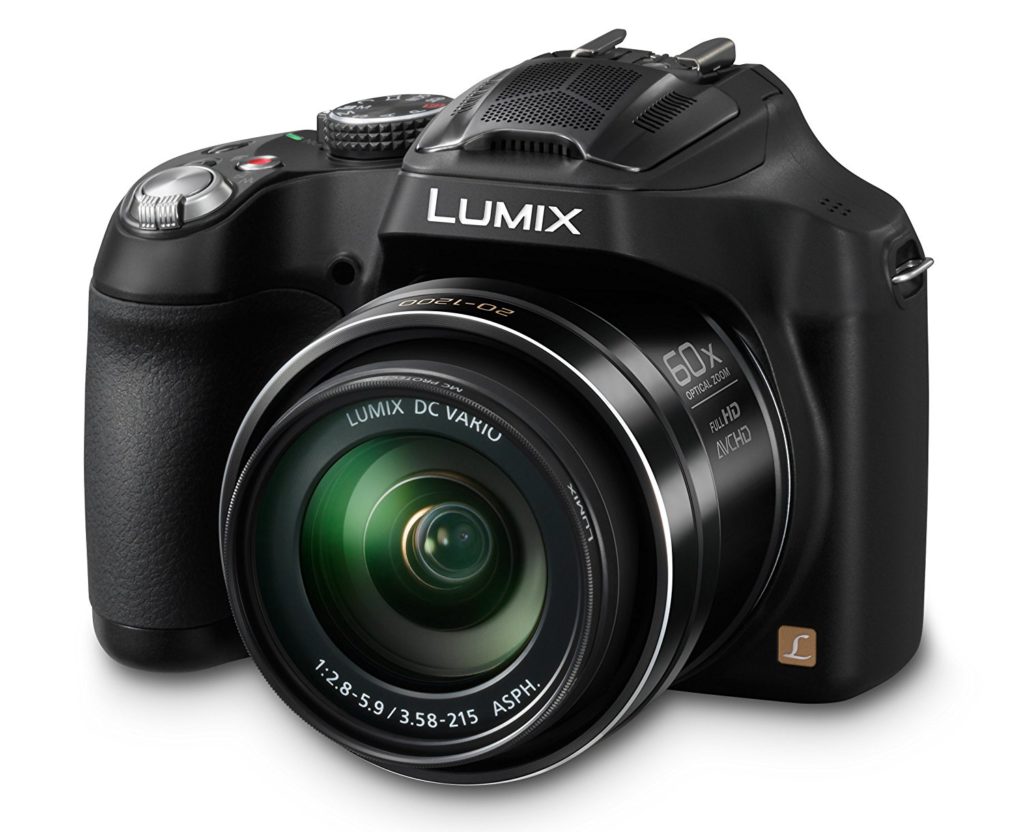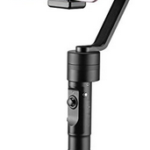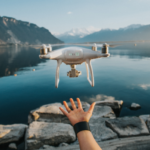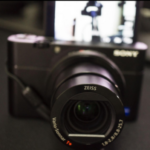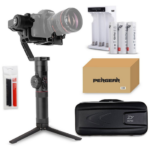Contents
Making videos on a budget, is it really possible?
My view, upfront: Yes, it’s pretty much possible. In my experience with camera technology, I have realized one critical thing: great videos don’t always necessitate a $500,000 camera. A 300-bucks cam kitted out with the right lighting, audio, and balancing accessories can easily pull out stunning videos, that are nearly as good as those shot with other high-end cameras. Importantly, don’t overlook the need to improve your filmmaking skills. Not even the most expensive and highly sophisticated camera rig could help if your filmmaking skills are wanting.
An overview of this article
The primary aim of this article is to help you in your quest for the best filmmaking cameras on budget. I also have several other tips on how you could juice up a low-budget cam to get the quality that you seek.
Worth mentioning is that the topic of budget filmmaking cameras can’t be wrapped up in a single article like this. So, this piece will serve as the first of a series of other write-ups that will offer in-depth information on budget video-making. Stay tuned.
What do you consider when purchasing the best camera for YouTube?

Ease of use- why it matters
It is vastly necessary to ensure that you won’t be fumbling to find the controls on your ideal camera. While there’s always something new to learn about each cam, a model that does not allow you make the right move when badly needed will lead to wasted moments.
Whether it uses switches, buttons, or menus, it’s crucial that they are all easily accessible and easy to navigate.
On this note, the camera needs to be easy to hold comfortably for handheld shooting. If you plan to hold the camera in your hands for prolonged sessions, you’ll need to pay close attention to its weight. Some can get really hefty especially with additional accessories (think external flash, microphones, and stabilizers).
Manual vs. Automatic controls- Which way and why?
The issue of manual and everything-auto controls brings the divide between cameras designed for amateurs and those meant for camera pundits.
Why should you go for an auto-cam?
Since you are just getting your feet wet, I would highly recommend that you go for a fully automatic camera. This is akin to an automatic car. Auto-cameras are Smart units that decide how your projects will look by controlling all the features for you. This means that you simply switch it ON and try to keep your object in the frame. The camera takes over everything else and gets things done.
Auto-cams come in handy if you are very inexperienced and when making tricky moves. You might also consider it when recording documentaries of unpredictable nature, for instance, wildlife and nature films.
They are also ideal for recording run-and-gun actions that start abruptly, therefore, making it hard to tweak the controls.
What’s the catch with Auto cameras?
The primary disadvantage with Auto cams is that they are not really as smart as you are. In most instances, their auto-functions (auto-focus, auto-sound leveling, and auto-iris) become unreliable when conditions change.
Why should you use a manual-cam?
On the other hand, manually-controlled cameras allow you to manipulate the rules of the game in your favor. The freedom to tweak the controls will enable you to get your intended results. Among other things, manual cameras let you control the depth of field besides blending multiple exposures.
Manual cameras- downsides
The issue with manual cams is that they require experience and lots of it to operate. Manual cameras also tend to flaunt high price tags than their automatic competitors.
But as any other expert would advise you, it pays to know how to use a manual camera. Mind you, as you camera collection expands, you’ll realize that the best-in-class cams are virtually manual.
Tip
You might also consider going for a camera with both manual and auto controls. These models allow you to learn and use the camera at the same. The transition to high-end manual cameras also becomes flawless.
Types of cameras- Which type do you go for as a starter?
By now, you must have known that cameras exist in 4 basic types; Camcorders, Point and shoots (compacts), DSLR, and Mirrorless.
Camcorders- are they worth going for?
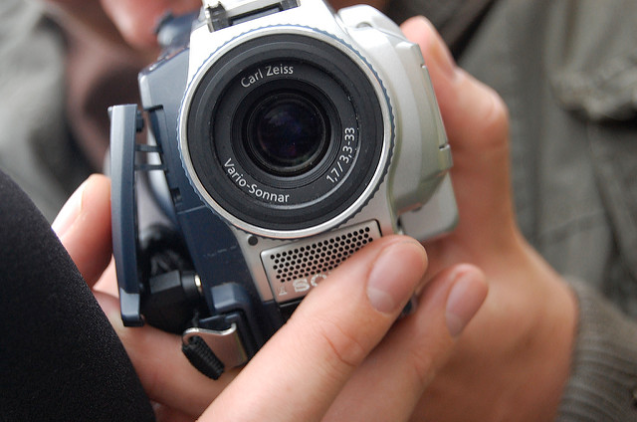
A few years ago, I wouldn’t have recommended a camcorder if you were into anything serious. These units were mainly a thing for moms to record videos of their kids in birthday parties. As such, it was more advisable to use your phone, in the meanwhile, as you save up for something serious.
But technology is changing and changing fast.
Camcorders have made remarkable strides over the years. We now have digital camcorders that can record videos at incredibly high resolutions. In fact, very few compact cameras will withstand the 1080p video qualities that high-end camcorders offer today.
These cameras also edge the competition in the filmmaking department with their lenses that have more robust zoom. This offers you get greater magnification power that allows you to be more creative with your projects. Another key selling point with these units is that they can record directly into a DVD and even to built-in hard drives that have higher capacity than your typical flash drive.
On this note…
My recommendation for the best camcorder for filmmaking;
Canon VIXIA HF R800
The Canon R800 is among the latest entrants in Canon’s midrange line of camcorders. While camcorders aren’t the best cameras for serious videos, the R800 has videos with above-average quality and which can be shared through YouTube and Facebook among other channels.
Its best highlights include the ability to shoot in 1920 by 1080 full HD video (1080p). Assuming that you are filming in ideal lighting conditions, you could be able to send your videos on a Blu-Ray disc straightaway.
Its 1080p video recording capabilities mean that you get well-detailed videos. The videos are also amazingly clear and have minimal noise and distortion. This can be credited to the DIGIC DV 4 Image Processor and the top-notch optics ingrained in this unit.
Mind you, this DIGIC DV 4 processor is the same chip that Canon uses in its best-in-class DSLR cameras. Resultantly, you get a high-end camcorder with amazingly smooth and sharp videos without costing you the earth.
Another key selling point with this unit is its stunning 57x magnification power. I must admit that this is the best that camcorders can get. My Sony FDRAX53/B which is 4 times pricier can’t match this with its 20x optical zoom.
To make it even better, it features SuperRange optical image stabilization to minimize distortion when making handheld shots. It also makes it possible to shoot clear videos in low light.
Point-and-Shoot cameras- are they any good for filmmaking?
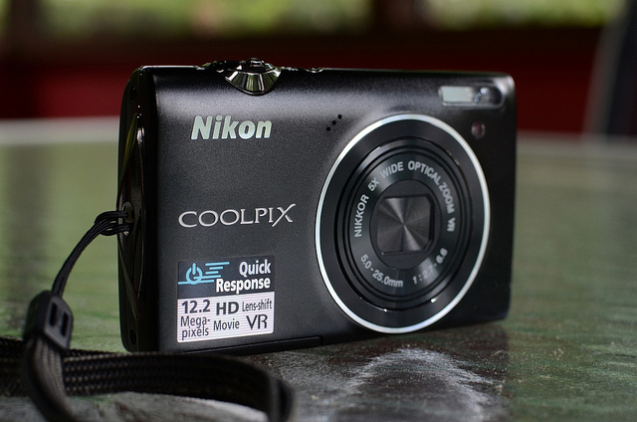
As I told you before, Smartphones are posing a real threat to camcorders. While technology advancement still proves them worthy (to some extent), the entry of 4k-capable phones seems to take the reign slowly.
I would, therefore, advise you to stay clear of these and get something with a more serious look and appeal. My next recommendation here would be a point-and-shoot camera.
These pieces of technology derive their name from their simple operations. Also known as Compact/ Fixed Lens camera, most point-and-shoots use focus-free lenses or autofocus in regard to focusing. They also have an array of automatic systems that make them super friendly to budding videographers.
Unlike most Camcorders, Point-and-shoots can be quite expensive with some crossing the $1000-mark- for instance, the Fujifilm x100f, and the Sony RX10iii.
Of course, these are overkill for you. That being said, here is my recommendation of the best point-and-shoot for beginners;
Panasonic LUMIX DMC-FZ70
The Panasonic Lumix DMX-FZ70 made its debut mid 2013 and I always wish that it came in my life earlier.
Point-and-shoots are more of a DSLR camera in a compact design. While their small footprint is their major strength, it really limits your abilities since most of them don’t offer a horseshoe. Consequently, you can’t add extra video accessories such as a shotgun microphone or a third-party flash Speedlite (not so necessary in videos, though).
That’s why, in my opinion, the Panasonic Lumix DMC-FZ70 deserves a special mention. If you are into serious business, an external mic and flash are some units that you’ll consider adding to your kit sooner than later. They add some juice to your project and give your videos a degree of professionalism.
The DMC-FZ70 is a unique blend of a DSLR and a point-and-shoot. Simply put, this is a point-and-shoot in a DSLR body.
Its slightly thicker body- that does not add much weight, by the way- not only increases durability and sturdiness, it also makes it easier to hold the camera.
Performance wise, this camera has an insane 60x optical zoom that offers superb close range shots. It also boasts a built-in Dolby microphone which I have come to like due to its excellent sound clarity when vlogging.
Designed for starters, the DMC-FZ70 has 4 exposure settings, 3 of which are completely automatic. This means that you have less to do. There’s, however, another manual control that allows you to get a great shot every time.
But to make it a better deal for you, this camera currently costs almost the same as the Canon VIXIA HR800. Seriously, I don’t see why you shouldn’t go for this one.
Best DSLR Cameras for beginners
As you continue to get a hung of these units, you’ll one day consider getting a DSLR (Digital Single Lens Reflex) camera. These cams are regarded as the crème-de-la-crème in filmmaking. Most professional videographers swear by these cams and also own at least 2 of them which they use interchangeably.
Why are DSLR Cameras the best for filming?
Do-Everything-Yourself
What is so good about most DSLRs is that they allow you to tweak your settings for the most customized projects. While some also have auto mode functions, manual controls win out. Importantly, most of these controls are positioned within your fingertips so you can access them without much fumbling.
Large ISO Range
While this differs from one DSLR to another, they have a wide ISO range settings that allow you to shoot your videos flawlessly in different light conditions.
Larger Sensors
If asked to choose between a point-and-shoot and a DSLR, I would choose the latter without a second thought. Due to their size, Fixed Lens cameras are fitted with smaller image sensors. That being said, they also tend to have smaller megapixels and also work at much slower ISO levels. At the end of the day, you get grainier and noisier shots than you would get from a DSLR with a large sensor.
Tip 1
This is the reason why megapixels have very greater significance on the performance of a camera. So, next time you are shopping for a camera, pay more attention to the size of the sensor rather than the MP.
So, what’s my recommendation for the best DSLR for videographers on a budget?
My first pick here would be the Canon EOS Rebel T6. The Canon Rebel T3i (one of my old trustees) is also worth checking out if you have a slightly flexible budget.
The reason why I recommend the Rebel T6 is that you get it as a full kit of everything you need to set your foot in filmmaking.
Do know that most DSLRs are sold body-only. You’ll need to purchase the lenses separately. These could cost you several hundred bucks on top of the price of the camera.
Amazingly, the Rebel T6 comes as a full kit with the body and 2 lenses on board. But what’s even better is that it’s merely a hundred bucks pricier than my first 2 recommendations.
The main advantage of owning a DSLR is that’s that there are limitless possibilities about how your videos can look. Besides offering you utmost control over the quality of your shots, these cameras allow you to advance and use high quality lenses as your kit grows.
And the best part is that most of these lenses are switchable between various cameras. This means that none of your lenses will go to waste even as you upgrade to the best-in-class models.
A camera stabilizer- what is it and why is it so necessary?
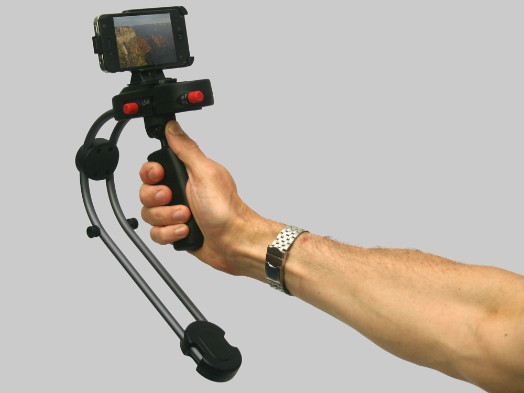
As I told you before, what matters most is the level of your skills and how good your content is. A good filmmaking camera only comes to help you get things done.
Speaking of upping your skills in using a camera, there is another accessory that most people don’t talk about; a camera stabilizer.
At this point, let me introduce you to this article on how a stabilizer works. Stabilizers work by deadening most of the shakiness that may be transferred from your body to your videos.
Are camera stabilizers hard to use?
Well, using stabilizers could be so daunting at first. In my experience with these units, the tricky part comes when finding the balance between your camera and the counterweight plates. When you learn how to do this, everything else becomes a breeze.
On this note, don’t ignore the numerous free how-to guides on YouTube like this one below.
What is the best camera stabilizer for starters?
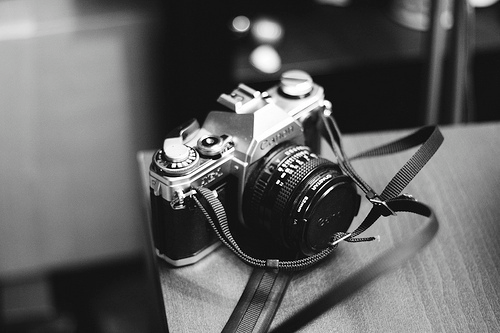
Steadicams can get pretty expensive and they also get tricky to use as you climb up the ladder. However, there still exist several other easily affordable easy-to-use units for videographers on a budget. A good example here is the Yelangu st60. It’s pretty affordable and strong enough to support several DSLRs including the Rebel T6. Here is my review of the Yelangu st60.
I also have several other useful tips on how to use a stabilizer in this other review of the Glidecam HD1000 stabilizer.
Conclusion
I hope this introductory article was of help to you. In case you have some unanswered questions, feel free to engage me and other readers in the comments section. Again, as I told you earlier on, this is the first article of a series of others around this topic.
